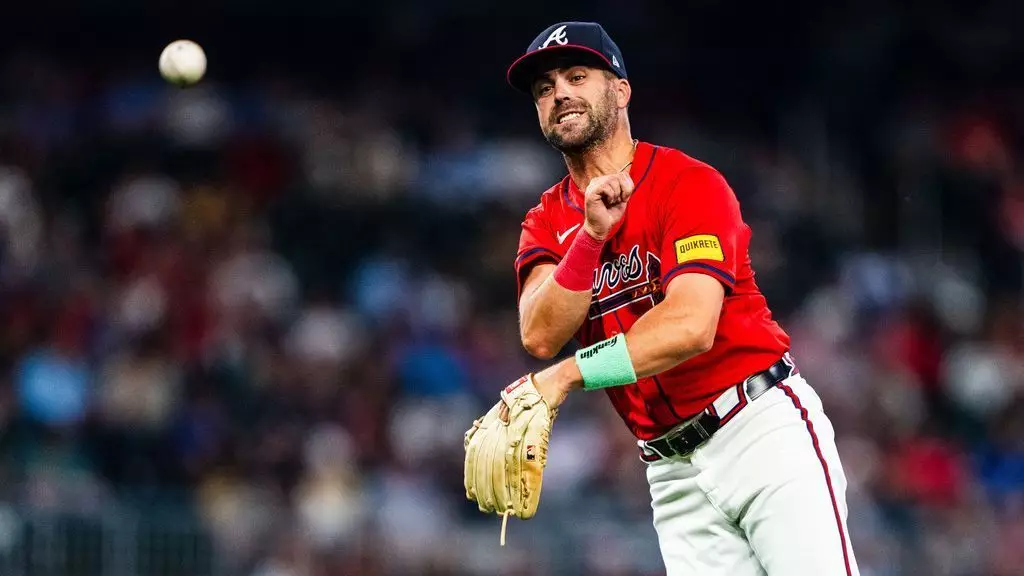The Atlanta Braves have faced another hurdle as infielder Whit Merrifield suffers from a left foot fracture. This injury occurred during a game against the Toronto Blue Jays, where an errant foul ball met the unfortunate target of his foot. Such incidents are a stark reminder of the physical toll that baseball players endure, where even a single moment can lead to protracted periods off the field. Initial evaluations, including CT scans and MRIs, indicated that Merrifield would be sidelined for a significant six to eight weeks, leaving questions about his participation in upcoming games, particularly the anticipated series against the Los Angeles Dodgers.
Despite the grim initial prognosis, Merrifield’s interaction with a specialized foot doctor brought a sense of relief. The assessment revealed that the fracture, while serious, is classified as “stable.” Manager Brian Snitker emphasized this point, noting the importance of managing expectations around such injuries. “It’s about what he can tolerate,” Snitker stated, which shifted the focus on Merrifield’s recovery towards his comfort level rather than strictly adhering to the initial timeline for recovery. This nuanced understanding of the injury could potentially shorten his downtime, contingent on how he responds to treatment and manages pain levels once the swelling subsides.
Whit Merrifield’s role has been pivotal for the Braves since his arrival in July after being released by the Philadelphia Phillies. With a batting average of .243 and a .701 OPS across 34 games, he has proven his worth to the team. The Braves’ decision to acquire him speaks volumes about their strategy to enhance depth in the infield. The franchise’s willingness to bring in players who can adapt and contribute swiftly cannot be understated, particularly as they navigate the challenging landscape of the season.
In addition to Merrifield’s situation, the Braves have also made tactical roster moves, including the acquisition of utilityman Cavan Biggio from the San Francisco Giants. Such decisions, coupled with injuries, showcase the dynamic and often unpredictable nature of a Major League Baseball season. Biggio’s acquisition may help fill gaps left by injured players or provide additional support in light of Merrifield’s recovery. It’s a strategic shift that illustrates how franchises continually adapt to maintain competitiveness and capitalize on the ebb and flow of player availability.
As the Braves navigate both injuries and roster changes, all eyes are on Merrifield’s recovery. His journey back will be one of resilience and adaptability, not just for him, but for the team’s performance going forward. The upcoming series against the Dodgers will serve as a benchmark for clarity on his return. The situation emphasizes that in professional sports, optimism and pessimism often coexist, and player health remains a top priority intertwined with the team’s aspirations. With Merrifield’s stable injury status and the managerial support behind him, there is a palpable sense of hope for a speedy and successful comeback.


Leave a Reply